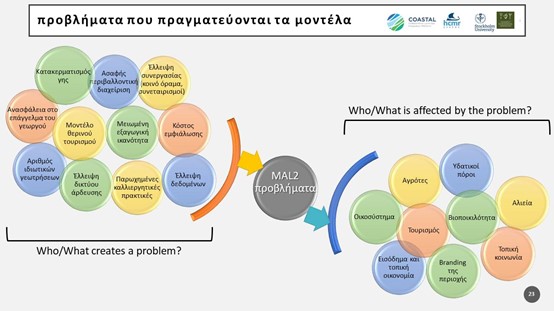To achieve this, the modelling team concentrated its efforts on quantifying the most important challenges of achieving this, according to the stakeholders. The three recognised submodels are a) conversion to sustainable agricultural practices and the need for collaboration among farmers, b) water demand and the salinization of Gialova Lagoon, and c) the current tourist development model which puts extra pressures on land and water resources, instead of capitalizing on the relative advantages of the region which could also enhance connections with other economic activities of the area (farming, olive oil making, fishing), as well as cultural heritage and the environment (bird watching, nature walking, diving etc).
These models were discussed with the stakeholders and the local partners during the second round of multi-actor workshops, which was held online due to the pandemic. The discussions with the stakeholders lasted four and half hours and had three distinctive sections although concentrated on validating the system dynamic models through discussions and online questionnaires as well as clarifying the identified solutions and policy connections to the presented challenges. Besides the solutions presented within the dynamic system models, the participants were asked to contribute the development of a business roadmap with specific business ideas and actions within a timeline that could drive the modeled solutions. Finally the participants were provided with a questionnaire focusing on climate change adaptation mechanisms. However, the discussions on the Shared Socioeconomic Pathways were limited due to time constraints and all participants as well as organisers agreed that these very important issues will need to be further elaborated in a future meeting.

